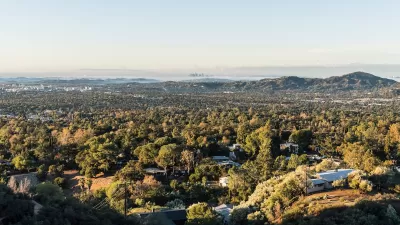With housing prices out of reach for many immigrants in the U.S., more and more are investing in houses in their home countries -- and their governments and local lenders are doing all they can to encourage it.
"It is the American dream in reverse: Arias is part of a growing contingent of immigrants who are gobbling up real estate in their native countries, discouraged by high housing prices and foreclosures in the United States and enticed by the possibility of returning home to a better life than the one they left behind."
"Developers from countries such as El Salvador, the Dominican Republic, Mexico, and Peru are increasingly courting immigrants at housing fairs across the United States, including two events in Massachusetts in the last few weeks. Thousands of immigrants are buying homes in their native countries every year, and more private lenders and some governments are offering financing to sweeten the deal."
"Often, they cannot qualify for mortgages because they live in the United States, so they send money to relatives who oversee construction of a home. Even when immigrants qualify for loans, he said, interest rates are often prohibitively high."
"In recent years, though, more real-estate developers, private lenders, and governments are making it easier for immigrants to buy homes directly, according to government officials and the Inter-American Development Bank in Washington. The Dominican Republic's government is allowing immigrants to apply for up to $10,000 in aid for down payments. In Mexico, mortgage lender Su Casita had loaned about $66 million in mortgages to 1,420 Mexican immigrants in the United States as of early last year."
FULL STORY: American dream goes global

Trump Administration Could Effectively End Housing Voucher Program
Federal officials are eyeing major cuts to the Section 8 program that helps millions of low-income households pay rent.

Planetizen Federal Action Tracker
A weekly monitor of how Trump’s orders and actions are impacting planners and planning in America.

Ken Jennings Launches Transit Web Series
The Jeopardy champ wants you to ride public transit.

Washington Legislature Passes Rent Increase Cap
A bill that caps rent increases at 7 percent plus inflation is headed to the governor’s desk.

From Planning to Action: How LA County Is Rethinking Climate Resilience
Chief Sustainability Officer Rita Kampalath outlines the County’s shift from planning to implementation in its climate resilience efforts, emphasizing cross-departmental coordination, updated recovery strategies, and the need for flexible funding.

New Mexico Aging Department Commits to Helping Seniors Age ‘In Place’ and ‘Autonomously’ in New Draft Plan
As New Mexico’s population of seniors continues to grow, the state’s aging department is proposing expanded initiatives to help seniors maintain their autonomy while also supporting family caregivers.
Urban Design for Planners 1: Software Tools
This six-course series explores essential urban design concepts using open source software and equips planners with the tools they need to participate fully in the urban design process.
Planning for Universal Design
Learn the tools for implementing Universal Design in planning regulations.
Heyer Gruel & Associates PA
Ada County Highway District
Institute for Housing and Urban Development Studies (IHS)
City of Grandview
Harvard GSD Executive Education
Toledo-Lucas County Plan Commissions
Salt Lake City
NYU Wagner Graduate School of Public Service





























